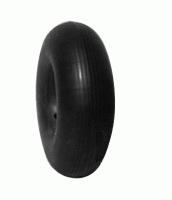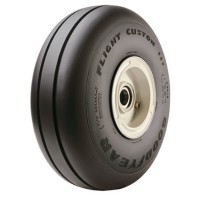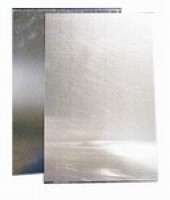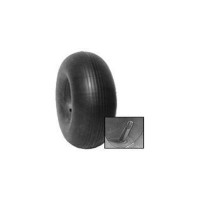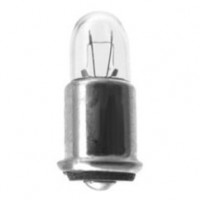SAME DAY SHIPPING ON ORDERS PLACED BY 4 PM | 877-4-SPRUCE
Model B-29
$215.95/Each
Part# 13-10487
MFR Model# AB29FT
MFR Model# AB29FT
Overview
|
This collectible B-29 represents FiFi for years the worlds only flyable B-29, now owned and operated by the Commemorative Air Force. This detailed model B-29 shows the advanced Superfortresses that helped speed the end of World War II through deadly air raids on Japanese cities in 1945. Painstakingly built from Philippine mahogany by our skilled craftsmen with a wealth of detail, this 1/72-scale model B-29 makes a great gift for any aviation enthusiast or history buff. The Boeing B-29 was the most complex aircraft of the first part of the century. It dwarfed other airplanes, including its famous predecessor, the B-17 Flying Fortress. At 99 feet long, with a wing span of 141 feet, a B-29 weighed more than 60 tons loaded. Its four Wright R-3350 engines could speed it to more than 350 mph, and to altitudes over 30,000 feet. The B-29 also featured pressurized crew compartments, a central fire control station directing 10 .50-caliber machine guns in remote-controlled turrets, analog fire control computers, and use of lightweight alloys throughout the aircraft. Because of its complexity, the B-29 was troublesome to develop--engine fires caused by exhaust valves were a particular problem. The B-29s first flight was on Sept. 8, 1942, but the program was beset by problems and delays. On Feb. 18, 1943, the first prototype crashed into the Frye meatpacking plant in Seattle as company test pilot Edmund Allen desperately tried to bring his flaming B-29 back to Boeing Field. Service delivery of the B-29 began in 1944, with the first combat mission flown on June 5, 1944. The first combat missions were flown from bases in China with the heavy bombers and supplies being flown over the Hump´ of the Himalayas. For the June 5 mission, 77 B-29s bombed railroad shops in Bangkok, then occupied by Japanese troops. The first strike against the Japanese homeland since the Doolittle Raid of 1942 was flown on June 15, 1944, when 47 B-29s sortied from Chengdu, China to strike the Imperial Iron and Steel Works at Yawata, Japan. Three bombers were lost on this raid, the first combat losses of the Superfortress. The strikes against Japan from China continued at a relatively slow pace, with fuel and supply issues forcing a reduced combat tempo. With the capture of Pacific islands in the Marianas, B-29 operations gradually shifted from China to the new bases. The six-runway base at Tinian eventually made it the busiest of the war as the Army Air Forces began extensive operations against the Japanese homeland. Though the B-29 was designed for high-altitude bombing, early efforts against Japanese targets were largely ineffective. On the first high-altitude raid from Pacific bases, on Nov. 24, 1944, only about 10% of the bombs hit their targets. High winds---and high altitude jet streams---complicated bomb drops from planes operating six miles over the targets. Gen. Curtis Lemay, commander of the Air Force, devised new tactics. Instead of bombing from high altitude during daylight, his crews would go in at night at medium altitudes to drop incendiary clusters on Japanese cities. This plan included removing most of the armor and defensive armament to lighten the Superfortresses and increase bomb loads. The resulting fire raids were the deadliest in human history, with death tolls exceeding the nuclear raids on Hiroshima and Nagasaki, but they also sped the end of the war. The raid on Tokyo the night of March9-10, 1945 destroyed 16 square miles and killed more than 100,000 people. B-29s also dropped hundreds of naval mines in the waters surrounding Japan, further isolating the home islands that had been already isolated by the U.S. Navys submarine warfare campaign. The B-29 continued in service after World War II as the nation´┐Żs first nuclear-capable bomber, as well as flying conventional bombing missions during the Korean War. The B-29 also formed the basis of the KC-97 Stratotanker Boeing 377 Stratocruiser. This collectible B-29 model portrays ´┐ŻFifi,´┐Ż a B-29 rescued from a bombing range at the Naval Air Weapons Center China Lake in 1971. In just nine weeks, a Commemorative Air Force---then known as the Confederate Air Force---restored systems, replaced fuel, electrical and hydraulic lines, and tested the props and engines. On Aug. 3, 1971, the B-29 SN44-62070 took to the sky again for the 6-hour, 38-minute flight to the CAFs headquarters, then in Harlingen, Texas. Complete restoration took until 1974, when the B-29 was christened Fifi and spent years thrilling audiences at air shows nationwide. Fifi is now undergoing engine work at Cavanaugh Flight Museum in Texas and CAF officials hope this unique aircraft will soon be flying again. |
WARNING: Cancer and Reproductive Harm - www.P65Warnings.ca.gov. |
Q&A
Please note, Aircraft Spruce's personnel are not certified aircraft mechanics and can only provide general support and ideas, which should not be relied upon or implemented in lieu of consulting an A&P or other qualified technician. Aircraft Spruce assumes no responsibility or liability for any issue or problem which may arise from any repair, modification or other work done from this knowledge base. Any product eligibility information provided here is based on general application guides and we recommend always referring to your specific aircraft parts manual, the parts manufacturer or consulting with a qualified mechanic.








 FREE Shipping
FREE Shipping

